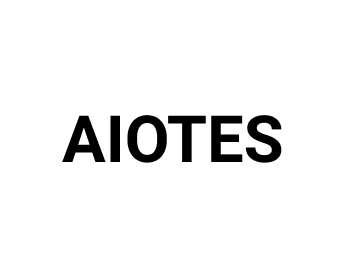Vision
The vision of ACTIVAGE is to be the global world-wide reference for providing the evidence that standard-secure-intraoperative IoT ecosystems enable new business models and cost-effective solutions for Active and Healthy Ageing, contributing to the sustainability of the health and care systems, the competitiveness of the European industry through innovation, and the improvement of the quality of life and autonomy of older adults in the form of independent living.
ACTIVAGE vision is to ignite and catalyse the strategic decisions of:
Private and public financial and business development services to fund innovation ecosystems around ACTIVAGE deployment sites and elsewhere, fuel innovation and competitiveness.
Source: www.activageproject.eu
Business Overview
ACTIVAGE is a European multi centric large-scale pilot on smart living environments building the first European IoT ecosystem across 9 Deployment Sites (DS) in seven European countries. The project has received funding from the European Union’s Horizon 2020 research and innovation programme in the amount of 25.129.823,71€ and has a consortium consisting of 49 partners from seven countries, 10 of which are industrial, 14 leading research institutes or universities, 11 major corporations plus 15 highly innovative SMEs, coordinated by Medtronic Iberica. Activage is also part of the IoT European Large-Scale Pilots Programme collaborating to foster the deployment of IoT solutions in Europe in a usage context, as close as possible to operational conditions.
Show more
The ACTIVAGE value proposition as an exploitation and commercialization hub is a service supporting the deployment of solutions towards products for the AHA domain. The platform creates scenarios of transference near to real conditions for the future commercial exploitation of the project results. To achieve this goal the project foresees the involvement of third parties engaged in “open calls” to provide solutions to specific issues. The platform allows SMEs to design, develop and test solutions as well as cities to deploy full ACTIVAGE technology and services. Engagement is strategic action facilitated by the platform seeking to enable the consolidation of the ecosystem and its sustainability.
The key assets of the platform are ACTIVEAGE offers AIOTES, Tools, marketplace, AHA services and knowledge that are available in a professionalized central repository with its appropriate governance policies and operation. An “Exploitation Vehicle” takes care of the ownership of ACTIVAGE legacy and impulses the evolution of the ecosystem after the end of the project for the next five years. This exploitation vehicle is called “ACTIVAGE-ORG” and highlights the difference between ACTIVAGE-Project and the organization that will take care of the future exploitation of the project legacy.
The customer segment of the platform consists mainly of researchers, service providers as public administration, health and social care agencies and payers, application and services developers.
Source: www.activageproject.eu
Show less
Technical Overview
The Physical layer is in charge of performing sensing information from the Physical world and actuating to modify the behaviour of the connected objects. The main building blocks constituting this layer are:
- Sensor/Actuator Node: a sensor/actuator node is the device interfacing with the physical world. This node or end-device can be a device sensing data (sensor) from the Physical word or a device controlling the parameters of the devices (actuator) interacting with the Physical world. Both of them have a connectivity element (in general wireless transceivers supporting BT/BLE, Zigbee, ZWave, … protocols) and support different use cases:
- Home automation monitoring (i.e., detectors of CO, gas, smoke flood, door contact, presence, temperature, and humidity).
- Home Monitoring Clinical Data (i.e., Blood pressure, blood sugar, heart rate, weighting scale).
- Home automation control (i.e., blind actuator, heating actuator, Wall Plug, light actuator).
- Tracker: it is a device in charge of acquiring the position of an object at a given time.
- Tags: they are used to identify some activities or behaviours. These tags can be based on different technologies such as Near-field-communication (NFC), quick response (QR) code, and Bluetooth low energy (BLE).
- Connectivity Devices: they are communication devices such as Aggregation points and Gateways, and the communication infrastructure (for instance, the switches, routers, firewalls, proxies needed to connect the Device layer to the Internet).
Show more
Each DS of the project uses its protocols and communication technologies to interconnect devices. However, most DS has chosen mainly wireless connectivity devices such as Bluetooth, BLE, ZigBee, Z-wave, Wi-Fi, and wired communication.
The Service layer is composed mainly of three components:
- Data Lake: it offers an intermediate component between the ACTIVAGE core of the semantic interoperability layer and high-level analytic components and end-users. The Data Lake allows the search and retrieval of IoT collected data, integrating the information gathered by all IoT platforms such as row data and extracted features and intermediate analysis results. The Data Lake exposes an API through which end-users and other components can have access to its functionalities;
- The AIoTES Data Analytics methods: provide mechanisms to extract high-level information and knowledge from the raw data, which can be used by users and applications through web services and provide functionalities including feature extraction and selection, anomaly detection, classification, prediction, clustering, and hypothesis testing;
- AIoTES information visualization methods: provide the end-user with means to explore large volumes of collected data in intuitive visual representations, in order to detect groups and patterns, and subsequently focus on the desired level of detail. Data analytics and visual analytics provide the user with aggregate information or extracted features, hiding details about the raw data, thus avoiding private data exposure.
In the Application layer, applications are stored, managed, and organized using a Marketplace: a shop for developers to provide and monetize their applications, and for end-users to discover, obtain, and deploy them. Marketplace implements most functions for users to browse, search, register, and install applications, keep a wish list, and get overall insights. Marketplace provides semantic search, recommendations with the AHA Advisor, Semantic Interoperability Layer capabilities, compliance with the Security and Privacy policy. Although there are many different needs and requirements related Applications specifically for each Deployment Site, applications can belong to the following categories:
- Efficient monitoring of the health status and activity of the elderly;
- Efficient monitoring of environmental parameters;
- Presentation of the information in a personalized, accessible, usable, and intuitive manner;
- Enable online data storage by also ensuring security and privacy.
Each DS in the project has developed its applications and analytics to monitor patients in AHA domain. In general, the analytics on IoT data used in the project are of a different type: real-time, batch, predictive, and interactive. According to its created applications, each DS has developed its human interfaces that are designed for desktop, web, and smart devices like smartphones, tablets, and smart TV devices.
The Semantic layer is used to implement IoT platform interoperability and for data modelling. ACTIVAGE subdivides the work of data modelling into several domain areas:
- IoT platforms/systems and services where sensors and sensor measurements are the focus, Active and Healthy Ageing (AHA) services where end-user applications are the focus;
- Data Security and Privacy systems and services where the IoT platforms/systems device protection and access control and data protection and privacy preservation are the focus aspects;
- Healthcare Information Systems Support.
The Semantic interoperability layer is the core element responsible for enabling semantic interoperability between all the heterogeneous IoT platforms and an Open Framework, and additionally ensures security, privacy, and secure data. To implement interoperability, the AIoTES architecture uses mainly two components of the Semantic Interoperability Layer:
- Interoperability Layer: Interoperability solution at middleware level that enables syntactic interoperability among IoT platforms and AIoTES. This component provides an abstraction level at the middleware;
- IPSM: interoperability solution at middleware level that enables semantic interoperability among IoT platforms and AIoTES. This component provides an abstraction level at the middleware. Data is sent through the Interoperability Layer using messages expressed in the common syntactic format. Each message consists of two RDF graphs (metadata and payload). The metadata graph contains information for routing and processing the message, which includes the identifier of the message, the identifier of the sender/receiver platform, the type of message, and the conversation identifier, which identifies a group of messages and allows matching a response with its corresponding request. The payload graph contains the actual data that is being sent. IPSM can perform ontology-to-ontology data translation among two different platforms that employ different ontologies or data models. As a result, one platform can receive data from another platform understanding the semantic meaning of this data.
During the project development, a security analysis activity was performed for Device, Gateway, Cloud, and Application levels. This analysis considers technical details as communication links, storage capabilities, Trust boundaries, etc. to identify and describe each potential Cybersecurity Threats attacks (S-T-R-I-D-E) and then to find the solutions to foil them.
Source: www.activageproject.eu
Show less
Contextual Overview
ACTIVAGE (ACTivating InnoVative IoT smart living environments for AGEing well) brings together 48 partners from 9 European countries with the objectives to build the first European IoT ecosystem across 9 Deployment Sites (DS) in seven European countries, reusing and scaling up underlying open and proprietary IoT platforms, technologies and standards, and integrating new interfaces needed to provide interoperability across these heterogeneous platforms.
The project delivers the ACTIVAGE IoT Ecosystem Suite (AIOTES), a set of Techniques, Tools and Methodologies for interoperability at different layers between heterogeneous IoT Platforms and an Open Framework for providing Semantic Interoperability of IoT Platforms for AHA, addressing trustworthiness, privacy, data protection and security.
Show more
ACTIVAGE ultimate goal is to create the evidence and to be the reference driver of this virtuous circle of the Active and Healthy Ageing market growth that will increase the demand by payers, providers and users, and will intensify the offer of solutions by the industry, SMEs and financial services.
It is establishing a European Multi Centric Large Scale Pilot distributed across nine interconnected Deployment Sites of seven European countries constituting the whole operational and evaluation space, in order to build local IoT ecosystems on top of legacy open or proprietary IoT platforms.
It is funded by H2020, currently CE marked and with no trademarks registered.
Source: www.activageproject.eu
Show less











